Roasties, roasted spuds, taters - whatever you want to call them- are a non-negotiable part of a Sunday roast. Some might say they are the best part! Show me a person who doesn't love roast potatoes. They're vegan (provided you cook them in non-animal-derived fat), gluten-free and low FODMAP. This recipe generously feeds four people, allowing for seconds (very important!).
These roast potatoes only need 3 ingredients and 2 simple cooking processes. We soften the potatoes first by boiling them whole in boiling water, then split them to get craggy pieces. We then coat them generously in our fat of choice and roast until crisp and crackling.
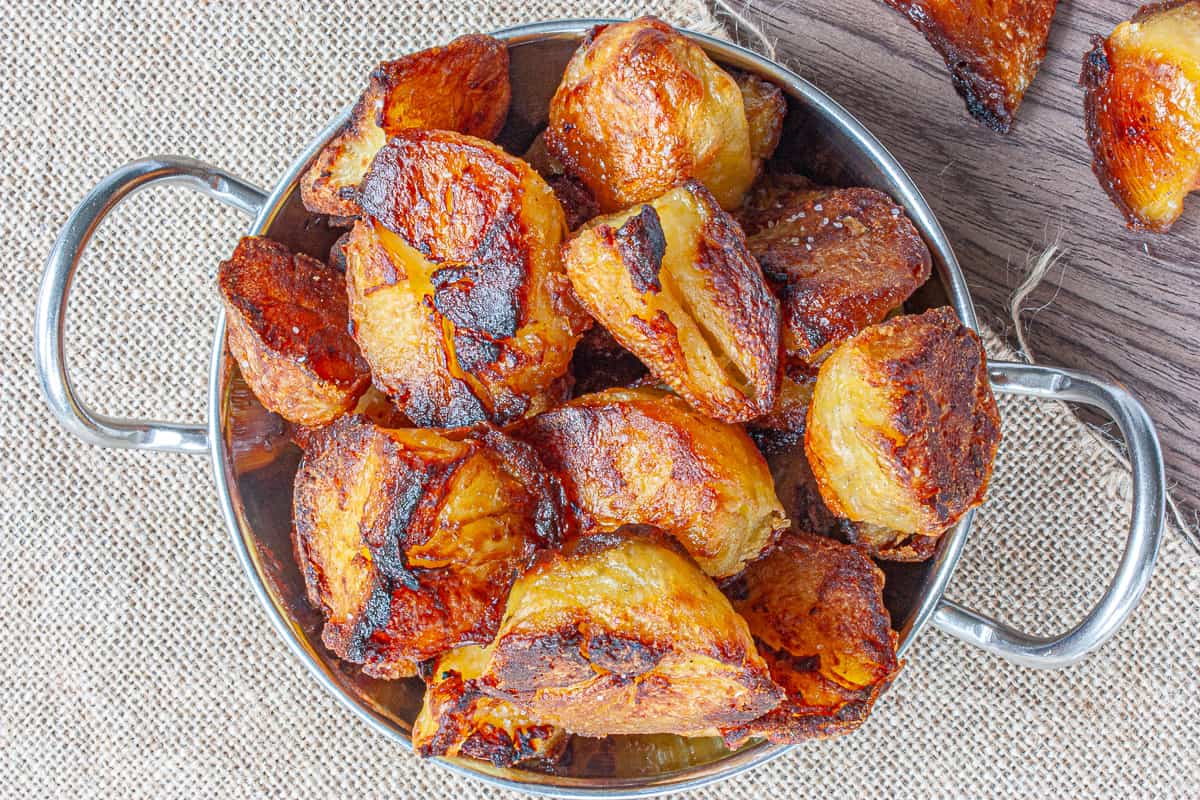
Start preparing a day ahead for the best results. You can even get organised by part-preparing these weeks/months in advance and keeping them half-cooked in the freezer. Great for make ahead prep for festive get-togethers with less hassle. Simply finish by roasting straight from frozen, allowing a few extra minutes.
Roast potatoes are a versatile accompaniment to so many meals. What about serving them with a slow-cooked lamb shoulder? The meltingly soft meat is a welcome contrast to these bronzed beauties. Roast potatoes are just as good with veggie mains. What about serving them with ugly-delicious stuffed Mediterranean vegetables (gemista)?
Easily batched up
Allow 300g potatoes and two tablespoons of fat per person. Your required baking dish size will depend how many people you're serving. We need enough space to lay them in one layer with a little space around them so that they can brown. You also need enough space to be able to access the oil to baste them. You can always use more than one baking dish if you have the oven space for it.
Serve Fresh
Roast potatoes are best served straight out of the oven with a generous sprinkle of salt. If you're making these as part of a roast meal, allow for meat resting time. Most larger joints of meat hold their heat for quite a while, if loosely covered with foil. The potatoes take around 45 minutes.
🥘 Ingredients

What potatoes are best for roast potatoes?
The best potatoes for roasties have a high starch and relatively low moisture content. The ideal varieties available will depend on where you live:
Australia - Sebago, Desiree (pink-skinned), Dutch-cream or Kestrels. The last two are 'waxy' (rather than floury) varieties, but still work well for a creamy, more buttery inside.
England - Maris Piper, King Edward
United States - Russet, Yukon Gold
What type of fat?
Flavourless vegetable oils such as canola or sunflower oil is fine to use, if a little bland. Extra virgin olive oil is MUCH nicer. If you're not catering to vegetarians, meat-derived fat, such as chicken schmaltz, lard (beef) or duck fat is delicious. These are high in saturated fat, which is great for crisping up foods.
Generously salt
Salt the water to parboil. This seasons the potatoes all the way through. Season the outsides generously while hot so that the salt sticks to the potatoes and doesn't just slide off.
🔪 Instructions
Size matters
Half a golf-ball size is about right for each roast potato. This gives a good balance between a crispy brown outside and soft fluffy inside. Each standard whole potato (100-150g each) makes 2-4 roast potatoes.
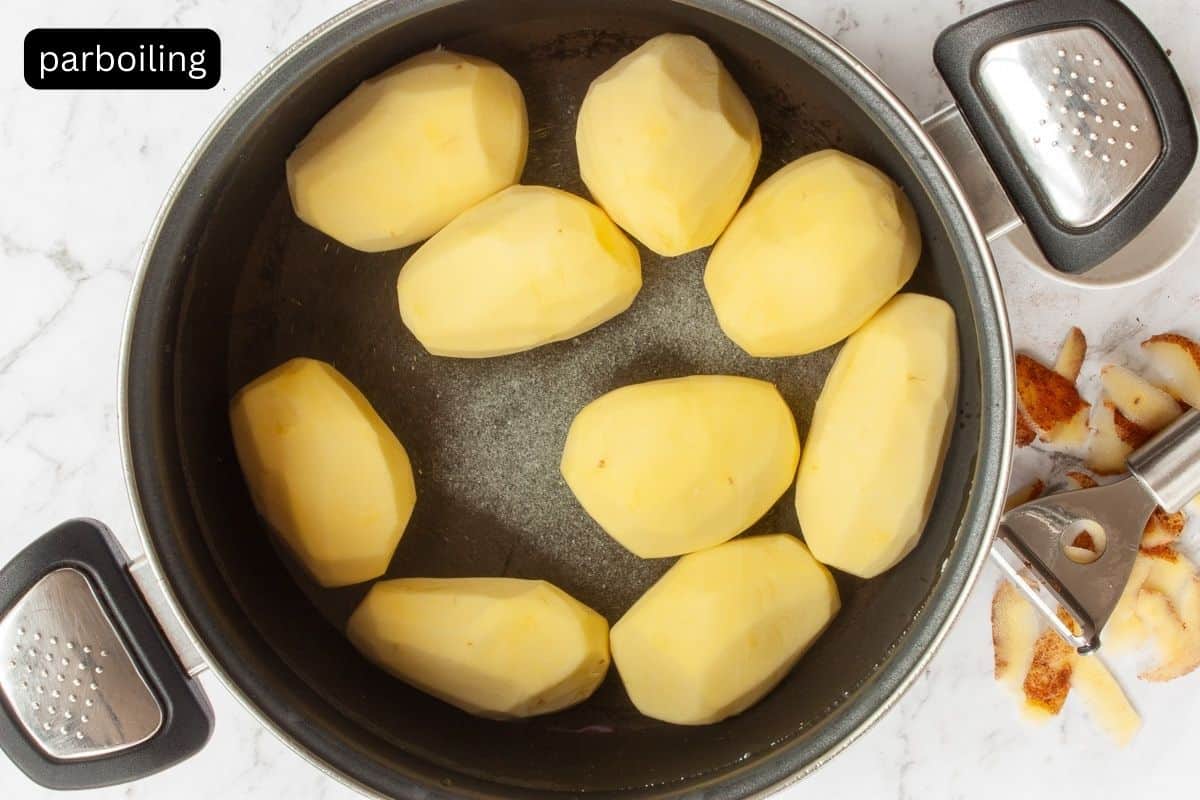
Twice-cooked
First Cook - par-boiling
The word 'parboil' is a combination of 'partial' and 'boil'.
We boil peeled whole potatoes in salted water, drain and steam dry.
The 'par' part is a bit misleading here because we do want to take it quite far. We boil the potatoes until we can easily spear them all the way through with a skewer. But, not so soft they're disintegrating.
Once done, use a spider or slotted spoon to gently scoop them out of the water and onto a cooling rack to dry out. We don't want to tip them out into a colander because they might crumble.
We split (rather than cut) the potatoes into smaller pieces. Then allow the potatoes to cool to room temperature. With care, transfer them (still on the cooling rack) to the fridge to dry out as much as possible before roasting. You can do this step well in advance, even the day before.
Once the potatoes are fully cooled, you can transfer them carefully to a bowl for easier storage.
Second cook - roasting
We create the magic by finishing the potatoes in the oven coated in hot oil.
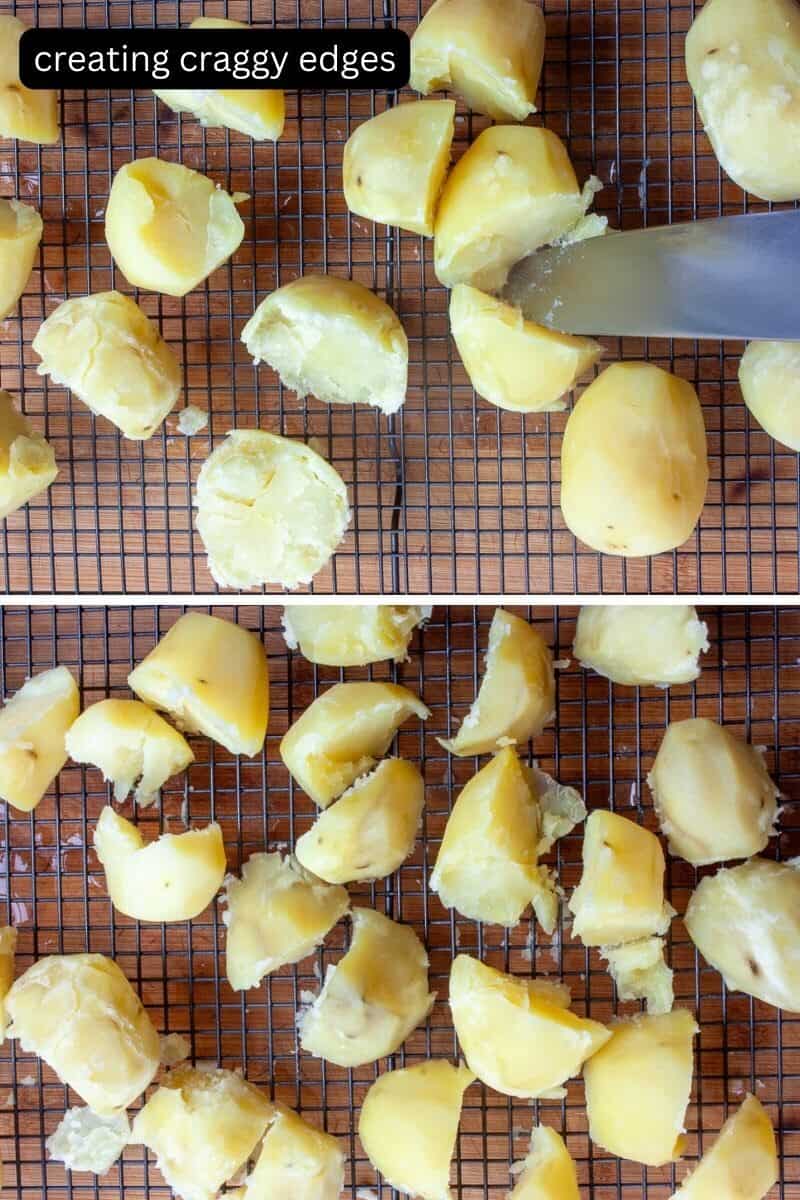
Rough edges
We parboil the potatoes peeled, but whole, then use the tip of a sharp knife to split them while still warm. This way you get craggy rough edges. Which make perfectly imperfect crispy roast potatoes. Push the tip of a sharp knife into the centre of each potato. Go in a little way then twist the knife so that they break into 2 ragged chunks (we don't want straight edges here). Repeat the splitting process if the pieces are still too big.
Don't worry if they discolour
As they cool down after their first cook, the potatoes will develop a skin around the outside. This is fine, it helps build that crust when they're roasted. Depending on the variety of potato you use, they may turn a bit grey in spots and look pretty unappetising. This is due to oxidation. Some recipes suggest covering the par-boiled potatoes in water to protect them from air until ready to roast. This will stop the dark spots but don't do this! Wet is the enemy of crispy things. The dark patches won't affect flavour and plus, you won't see this once they're roasted anyway.
Some flex with oven temperature
You might be cooking something else in the oven at the same time as the roast potatoes. Don't worry if the cooking temperatures don't match. Maybe you're cooking something else that is more temperature-sensitive, like a joint of meat. The meat can dictate the temperature. You can always crank up the heat after you have taken the meat out of the oven, while it's resting. I've roasted potatoes at temperatures ranging between 190°C to 220°C with no issues.
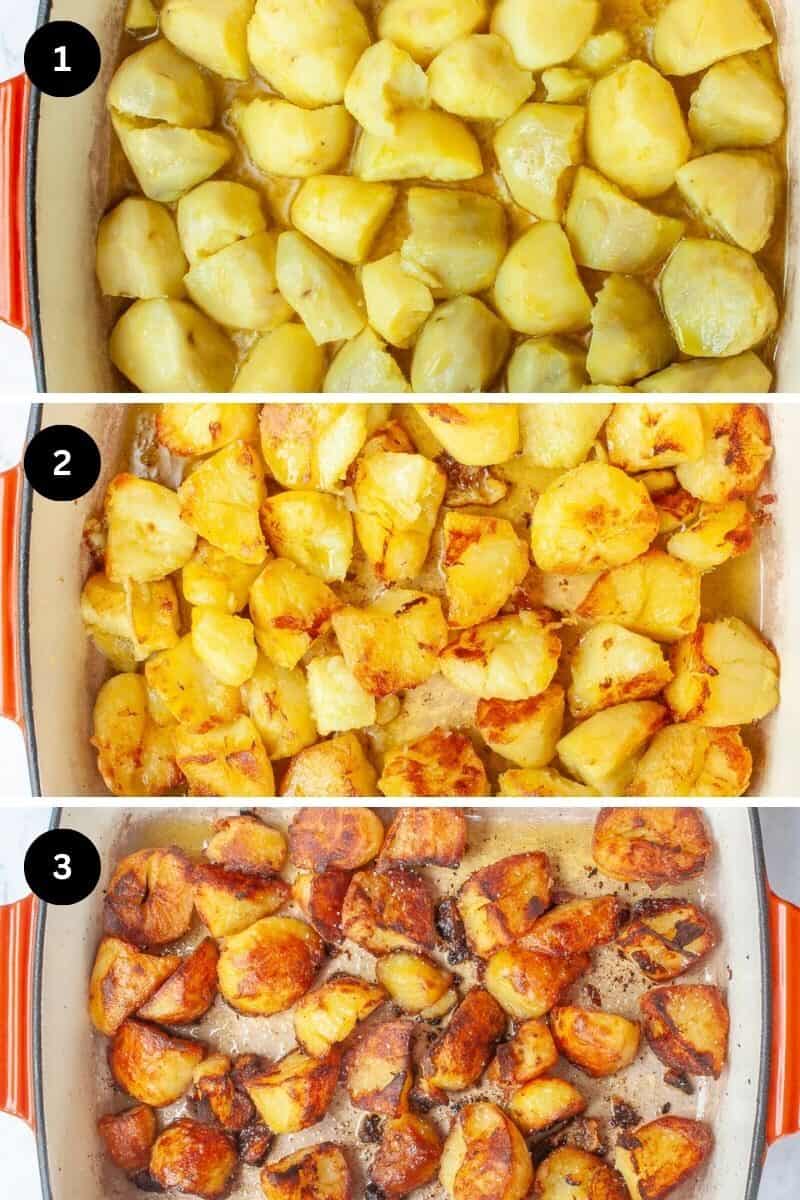
Preheat the oil
You can take the potatoes out of the fridge while the oven is preheating. Once preheated, put the fat in a roasting dish with high sides for 10 minutes. Place the potatoes one-by-one into the hot oil. Don't be tempted to tip them in. Watch out for oil splatters to your body and clothes - best to wear an apron for this. Baste the potatoes. You might find it easier to tilt the pan (wearing oven gloves) so that the oil collects in one corner. Once the potatoes are well spread out and coated in fat, return the dish to the oven. Repeat the basting process a couple more times over the roasting time, every 15 minutes. Turn the potatoes to get even browning with each baste. Most of the browning happens on the surface in contact with the dish.They will take about 45 minutes to cook.
What is basting and why is it important?
Basting involves spooning or brushing hot fat over the potatoes. We do this before putting the potatoes in the oven. The potatoes are too delicate to toss in oil. We baste another couple of times during roasting. Basting prevents the outsides from drying out too quickly and burning. It flavours the potatoes with the fat you're using and promotes even browning.
A baster is handy here, though not essential. Its a syring with a plastic bladder to squeeze which makes light work of sucking up a good amount of oil in one go and drizzling over the potatoes. They're a pain to clean and I've smashed two glass ones already 🙄 You can use a good-old spoon or pastry brush instead. I like a silicone pastry brush because you can dip in the fat around the potatoes and use the bristles to get into all their nooks and crannies.
If you've batched up, you may want to keep the oil hot while you're basting. If there are lots of potatoes to baste, it will take a while to do them all. You can place the roasting dish over moderate heat on the stove top.
Be gentle!
Don't lift/flip the potatoes until the undersides have crisped up completely. If they don't come off relatively easily, you run the risk of breaking off the crusts and leaving them cemented to the bottom of the pan. This is a sad situation! The potatoes will release themselves from the pan when they're good and ready. Don't force them.
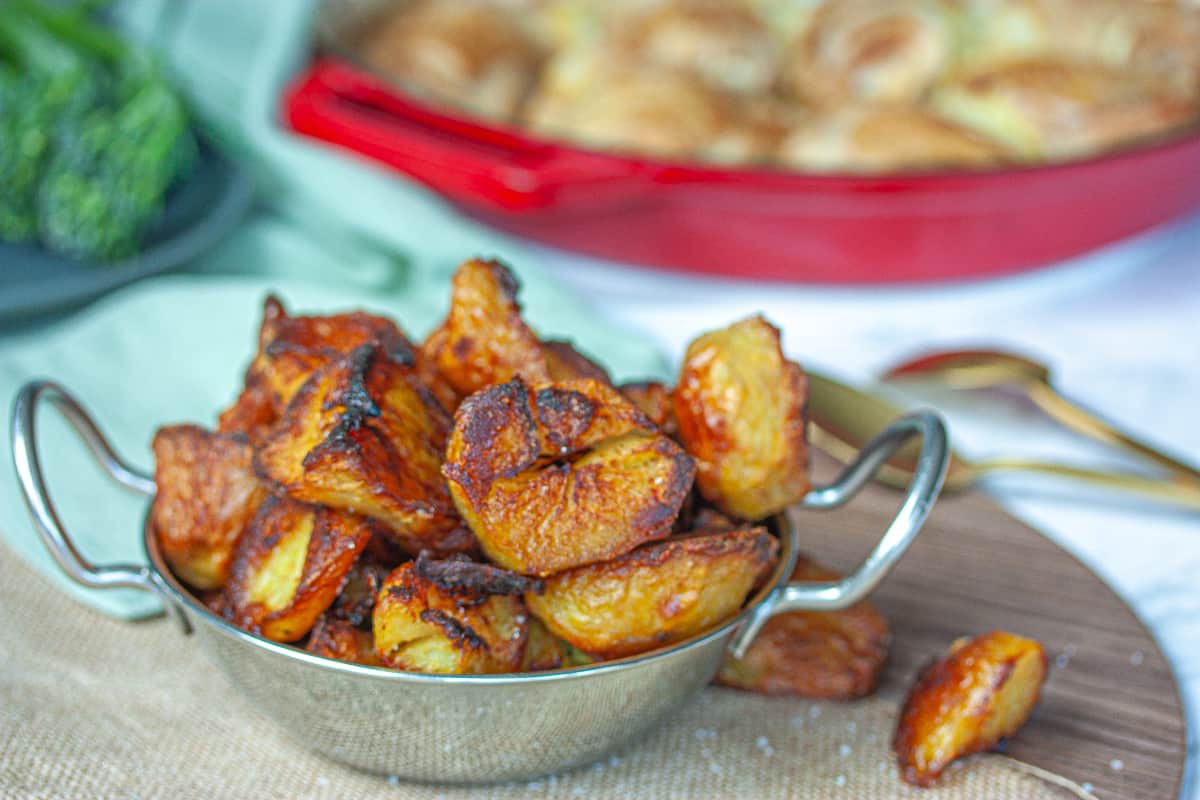
You've got your protein, and now your roasted spuds. Looking for some brightly coloured vegetable side dishes to complete your epic meal? How about orange mashed vegetables, the perfect make-ahead greens or purple roasted cabbage wedges?
And if you love crunchy roast potatoes (who doesn't?!), try a variant - potato stacks. Thinly sliced layers of potato cooked in a muffin tray for the perfect little portions of crispy goodness.
Love potatoes and all its forms? You might like to try -
Mashed Potatoes - buttery, comforting and versatile. A basic dish done right.
Twice-Baked Potatoes - BIG whole potatoes baked in their skins (or 'jackets'). We scoop out the insides, mix with butter and cheese and return to the oven to get a bit crispy.
📖 Recipe
Equipment
- Large baking dish (note)
- Optional (but very handy) - baster or silicone pastry brush
Ingredients
- 1.2 kg potatoes (about 8 evenly sized)
- 2 ½ litres cold water (enough to generously cover the potatoes)
- Tablespoon salt
- 120 ml oil/fat (note)
- extra salt
Instructions
- Boil Potatoes - peel the potatoes and place them (whole) in cold water (from the tap is fine). Add a tablespoon of salt. Bring the water to the boil, then maintain a simmer until the potatoes are tender, about 30 minutes. If you gently prod them with the tip of a sharp knife, the knife should enter easily without the potato crumbling.1.2 kg potatoes2 ½ litres cold waterTablespoon salt
- Crispy Outsides Prep - use a spider or slotted spoon to lift out the potatoes and place gently on a cooling rack. Use the tip of a sharp knife to pierce each potato in its centre, pushing the blade in about halfway, then twist the knife so they break into two ragged halves. Repeat this process if the pieces are still too big. Allow the potatoes to steam dry at room temperature before transferring to the fridge, still on the cooling rack.
- Chill - once completely cool, transfer all the potatoes gently to a bowl (uncovered) and refrigerate until required. This step can be done well in advance, up to three days before serving. Get the potatoes out of the fridge when preheating the oven.
- Preheat - preheat oven to 200°C. Ten minutes before putting potatoes in the oven, put the oil in the baking dish in the oven to preheat.120 ml oil/fat
- Roast & Baste - take the baking dish out of the oven. One by one, carefully place the potatoes in. Tilt the dish so that oil collects in one corner. Using a baster/silicone pastry brush or spoon, coat all the potatoes with fat. Spread the potatoes out and return the dish to the oven. Every 15 minutes, turn the potatoes and repeat the basting process. Cook for around 45 minutes, until the potatoes are evenly very browned and crisp.
- Serve - Drain off excess oil (try not to tip them down the sink!) and sprinkle liberally with salt soon after coming out of the oven. You can keep them in the dish to keep them warm. Serve as soon as possible and watch them disappear!extra salt

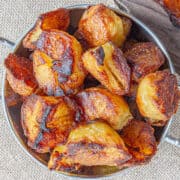
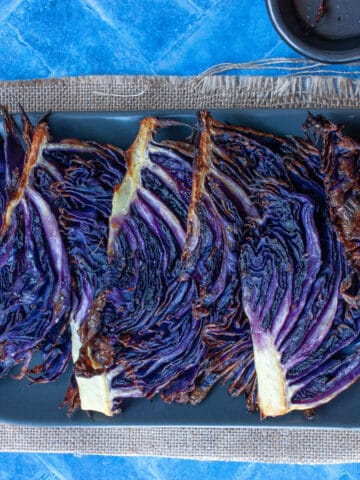
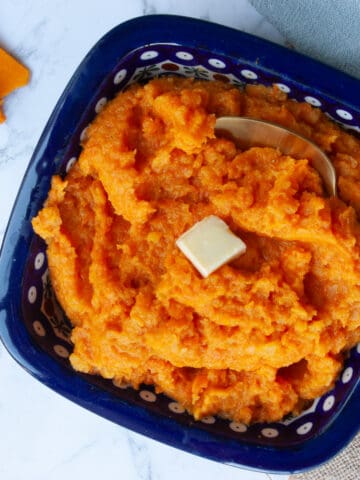
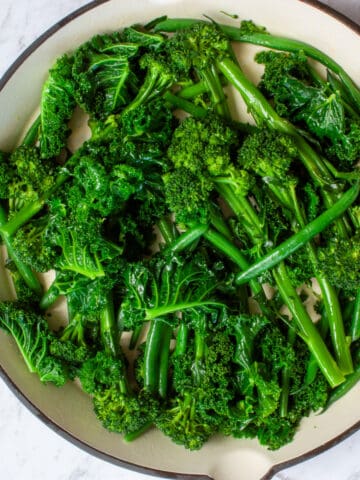
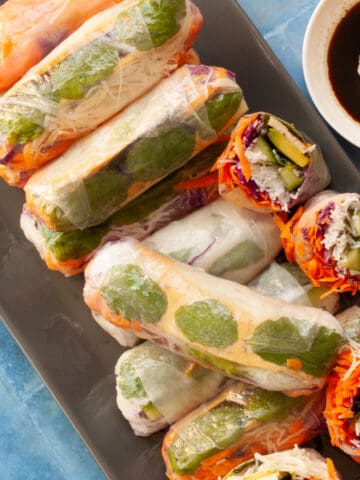


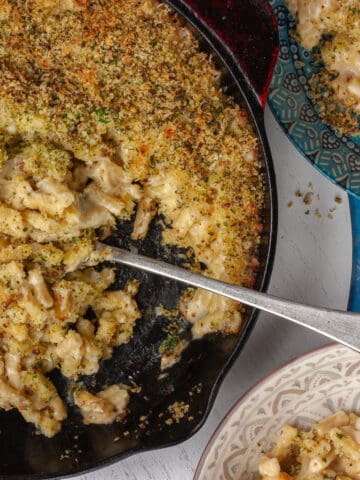
Comments